Hardwood lumber from firewood
Hardwood is expensive to buy retail, so woodworking can get rather costly if you have to buy all your wood. So to keep costs down, I try to reclaim wood from whichever source I can. One of the best sources I found so far is my dad's firewood pile.Firewood is usually chopped up hardwood that was not of good enough quality to cut into good lumber. But usually, the wood isn't all bad, and individual pieces between the knots and defects can be picked out of a pile that are of good quality, and square.
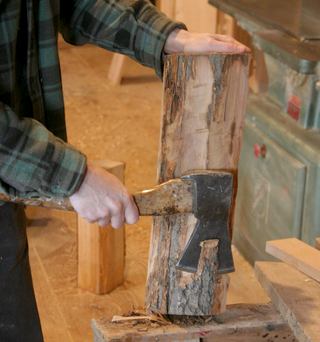 The first step is to is to de-bark the wood. The bark itself is not harmful
to the tools, but usually in the process of logging and turning into
firewood, the bark will get
some dirt caught in it. So you only really need to get the exposed part of
the bark off to be safe. Large lumber mills always de-bark the lumber.
On my dad's sawmill, we didn't, and in the dim light of evenings, you could sometimes
see a few sparks fly.
The first step is to is to de-bark the wood. The bark itself is not harmful
to the tools, but usually in the process of logging and turning into
firewood, the bark will get
some dirt caught in it. So you only really need to get the exposed part of
the bark off to be safe. Large lumber mills always de-bark the lumber.
On my dad's sawmill, we didn't, and in the dim light of evenings, you could sometimes
see a few sparks fly.
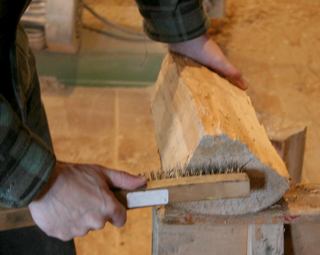 The next step is to get the dirt off the sides and ends with a wire brush.
The rough chainsaw cut ends are particularly prone to getting dirt caught in them.
The next step is to get the dirt off the sides and ends with a wire brush.
The rough chainsaw cut ends are particularly prone to getting dirt caught in them.
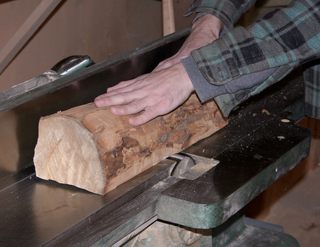 Start with the flattest side. Chances are it won't sit flat on the jointer.
But with the jointer set to only cut a few millimeters off, and a heavy piece
of hardwood on top, the blades can't catch the wood enough to get kickback.
I have never run into problems this way.
Start with the flattest side. Chances are it won't sit flat on the jointer.
But with the jointer set to only cut a few millimeters off, and a heavy piece
of hardwood on top, the blades can't catch the wood enough to get kickback.
I have never run into problems this way.
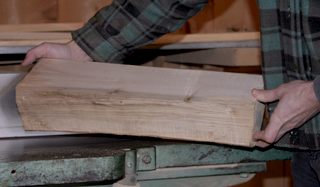 One face planed smooth, the next face is still the surface from splitting.
One face planed smooth, the next face is still the surface from splitting.
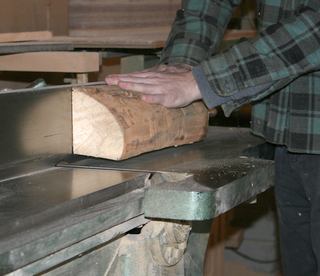 Using the fence to get the second face square to the first.
This piece of firewood has a bit of a bump on the second face, so the first few
passes are just to take that off. Being careful to hold the piece
level for the first few passes.
Using the fence to get the second face square to the first.
This piece of firewood has a bit of a bump on the second face, so the first few
passes are just to take that off. Being careful to hold the piece
level for the first few passes.
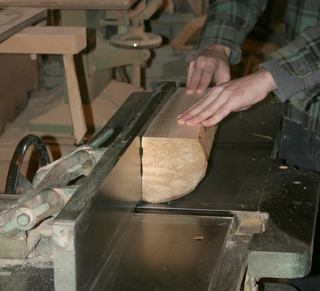 And now the third side. By default, the third face won't be parallel to
the first. I correct for this by lifting up one end while making passes
until its parallel. Its surprisingly easy to eyeball the sides
being slightly out of parallel as it passes over the jointer.
And now the third side. By default, the third face won't be parallel to
the first. I correct for this by lifting up one end while making passes
until its parallel. Its surprisingly easy to eyeball the sides
being slightly out of parallel as it passes over the jointer.
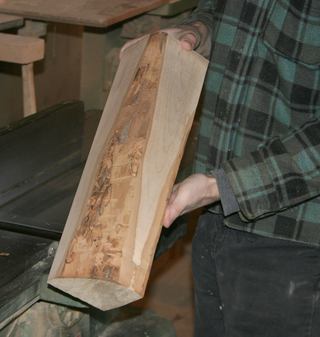 Do the same thing for the fourth face.
Do the same thing for the fourth face.
I never cut the piece all the way square. I just give it enough of a face so I can cut from both sides with the table saw. Most of the pieces I reclaim are too thick to cut all the way through from one side, so I need flat surfaces on both sides. I could do the next cuts with a band saw, but I lose less lumber with the table saw because it cuts more accurately.
To allow faster feed rates, I first only cut about 1.5" deep from both sides, and then crank up the blade all the way for the final cut. This way, I can feed the wood faster to avoid risk of scorching the wood from the blade friction, without risk of stalling the 1.5 hp motor on my saw.
Usually, the wood has some cracks on the end grain from drying. Depending on where I use it, I have to discard up to 3 cm from either end. Of course the firewood pieces are typically not that long, so I'm often pushing it in terms of how much of the end cracks I leave on for what I use.
I have experimented with splitting much longer
pieces of firewood with limited success.
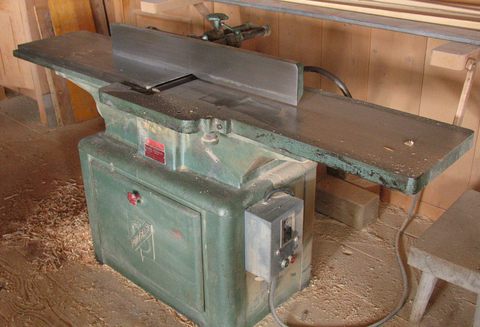 And of course, if I was reading this page, I'd want to have a look at
the jointer. This is my dad's 12" Poitras jointer. It was already very old when
my dad bought it used 20 years ago. Very solidly built, with a cast iron
stand and 1.5 hp motor. Recently the starter capacitors on the motor died,
and the date code on the old ones was from 1969, so that's probably about
the year it was built.
And of course, if I was reading this page, I'd want to have a look at
the jointer. This is my dad's 12" Poitras jointer. It was already very old when
my dad bought it used 20 years ago. Very solidly built, with a cast iron
stand and 1.5 hp motor. Recently the starter capacitors on the motor died,
and the date code on the old ones was from 1969, so that's probably about
the year it was built.
My little 6" powermatic jointer would be big enough to use for this job,
but this jointer is in my dad's workshop, which is also where the
firewood is, so it makes more sense to square the pieces up there before
I haul them away in my car.
| I made a video about getting lumber out of firewood, but this time using my own 6" jointer in my workshop, and using my home made 18" bandsaw |
See also:
To my
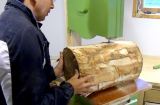 Cutting up a log on the bandsaw
Cutting up a log on the bandsaw Homemade sawmill
Homemade sawmill Resawing wide boards
Resawing wide boards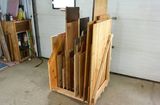 Sheet goods lubmer cart
Sheet goods lubmer cart My dad's workshop
My dad's workshop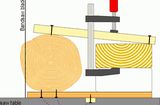 Bandsaw resaw sled
Bandsaw resaw sled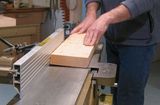 Squaring lumber on the jointer
Squaring lumber on the jointer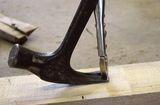 Pulling nails without
Pulling nails without